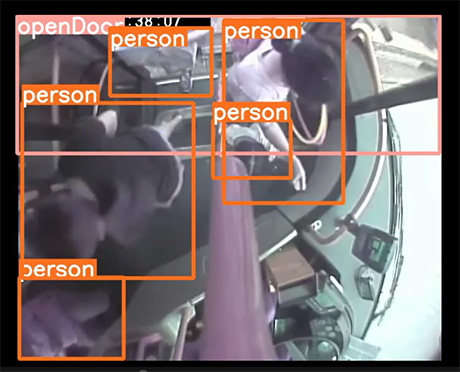Data Acquisition
»
Newsletters
Monitor - ISSN 1472-0221 Welcome to Monitor, thank you for subscribing.For your free copy of Windmill data acquisition software email monitor@windmillsoft.com. You can download Monitor as a pdf file from https://www.windmill.co.uk/monitor/monitor294.pdf.
* AI and Data Acquisition - A Case Study Artificial intelligence offers many opportunities for data acquisition systems. It can help reduce costs by removing the need for physical sensors. AI systems can be easily scaled up to handle large volumes of data from many sources. Its machine learning leads to continuous improvements in performance, making data acquisition systems more adaptive and responsive to changing conditions.
AI allows organisations to easily customise data collection systems to meet their specific needs, whether it's in agriculture, transport or other industries. One of example of how artificial intelligence is advancing data acquisition is in computer vision: analysing and understanding visual information and translating it into quantifiable data. For instance, in the new systems now being developed to count the number of passengers on public transport. We'll explore this a little further to show how AI can improve traditional data collection systems. Traditionally, public transport systems have relied on manual ticketing, periodic surveys or basic sensors to gather passenger data. These methods, while effective to a degree, have their drawbacks. Manual methods are prone to human error, while basic sensors can't differentiate between a person, a piece of luggage, or even the vehicle's own movements. This is where AI steps in. With its advanced image and motion recognition capabilities, AI can be trained to recognise and count passengers under various conditions, offering a significantly higher accuracy rate. One of the biggest challenges in counting passengers is determining when to start and stop the count. By leveraging AI to detect when doors are open, we can effectively begin counting only when passengers are boarding or alighting. This eliminates potential miscounts that could occur when the vehicle is busy and doors are closed, ensuring that only relevant data is captured. Every vehicle type - be it a bus, train, tram, or ferry - has its unique set of challenges. Different lighting conditions, types of doors, and passenger behaviors can all impact counting accuracy. Fortunately, with AI, systems can be trained specifically for each vehicle type. For instance, ferries may have larger doorways and more open spaces, while trams might have frequent stops with rapid passenger movement. AI can be tailored to understand these nuances, ensuring precise counts irrespective of the transport mode. From the dimly lit interiors of a nighttime bus to the sun-drenched decks of a ferry, the lighting conditions can vary drastically in public transport. With AI's ability to be trained using vast datasets, it can adapt to these changes, ensuring that passenger counts are not compromised due to environmental factors. Additionally, certain cultural or regional behaviors - like passengers clustering near doors or moving in groups - can be incorporated into the AI's learning, making the system globally adaptable. As we move towards smarter cities and systems, AI-powered solutions will undoubtedly play an integral role in shaping the data acquisition landscape. by David Collins, Retail Sensing. For more information contact sales@windmill.co.uk. Question "We are suddenly having a signal noise interference problem with our Microlink 770 data acquisition units which we have not seen before. We are getting big fluctuations every second or so on the input signal, with the signal translating to 1000lbs of force being applied to our load cell even though no load was being applied.
"
Answer The usual problem when the signal shows big fluctuations is a missing or faulty earth connection (i.e. the connection to the 0 V row of connections should be connected to mains earth). If you run your Microlink 770 at 1000 samples a second, then you may see the 50 Hz sine wave. This indicates that the signal is actually pick-up from the mains electricity. You can also easily check that it is not a problem with the unit. Simply connect the +ve and -ve inputs for one of the channels together. If all is working properly when you then collect data the reading will be constant.
The Newsletter for Data Acquisition and Control
Issue 294 September 2023![]()
![]()
Contents
* Your DAQ Questions Answered: Signal Noise InterferenceAI and Data Acquisition - A Case Study
Traditional Methods vs. AI-Driven Systems
Detecting Door Movements

AI only counts when the bus doors are openVehicle-Specific Training

Ai can be trained for all types of transport and situationsAdapting to Environments
Future of Data Acquisition
Your DAQ Questions Answered: Signal Noise Interference
Subscribe to Monitor